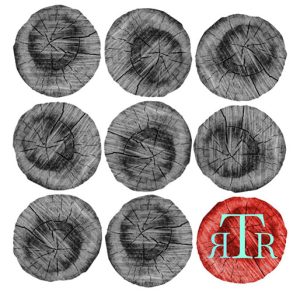Ecotone – Fall/Winter 2006
Volume 2 Number 1
Fall/Winter 2006
Biannual
Jeanne M. Lesinski
For readers not yet familiar with this wonderful journal: eco Greek oik-os, house, dwelling + tone tonos, tension. Thus an ecotone is a transitional zone between two communities, containing the characteristic species of each; a place of danger or opportunity; a testing ground. Ecotone the journal embodies all of these qualities: Its characteristic species are fiction, poetry, creative non-fiction, and interviews. Poet Sarah Gorham, in her illuminating essay, “The Edge Effect,” goes to great lengths to define and to help readers understand how such genres as the prose poem, short short, and lyric essay intermingle prose and verse and thus well represent the fertile concept of ecotone. In the process, she challenges writers and readers to greater levels of contemplation and creativity. The works in Ecotone are stylistic and thematic testing grounds for metaphoric maps, yet this issue also marks the debut of a genre new to the journal: literal, pictorial maps of places that are important to a writer (Aimee Bender “Three Maps”).
For readers not yet familiar with this wonderful journal: eco Greek oik-os, house, dwelling + tone tonos, tension. Thus an ecotone is a transitional zone between two communities, containing the characteristic species of each; a place of danger or opportunity; a testing ground. Ecotone the journal embodies all of these qualities: Its characteristic species are fiction, poetry, creative non-fiction, and interviews. Poet Sarah Gorham, in her illuminating essay, “The Edge Effect,” goes to great lengths to define and to help readers understand how such genres as the prose poem, short short, and lyric essay intermingle prose and verse and thus well represent the fertile concept of ecotone. In the process, she challenges writers and readers to greater levels of contemplation and creativity. The works in Ecotone are stylistic and thematic testing grounds for metaphoric maps, yet this issue also marks the debut of a genre new to the journal: literal, pictorial maps of places that are important to a writer (Aimee Bender “Three Maps”).
Above all, the creative non-fiction in this issue really shines. Lia Purpura’s “The Space Between” and Julianna Baggott’s “Who Needs Nature” soundly struck a chord with me (I can appreciate motherly anxiety), but Michael P. Branch’s “Endlessly Rocking” accomplished ever much more. It made me remember, made me laugh, made me want to “warp the linear narrative of days to see ourselves being told by a larger story that isn’t finished yet.” Moreover, in the interview with essayist and poet Reg Saner that prefaces four of his poems, Saner addresses the value of non-fiction with the admission: “I didn’t dream nonfiction would teach me incomparably more than my work in verse.” Yet for Saner it did, and in this I find great inspiration, as I do in knowing that journals like Ecotone excel at providing a venue for lyric and contemplative prose. Bravo! [http://uncw.edu/ecotone]




